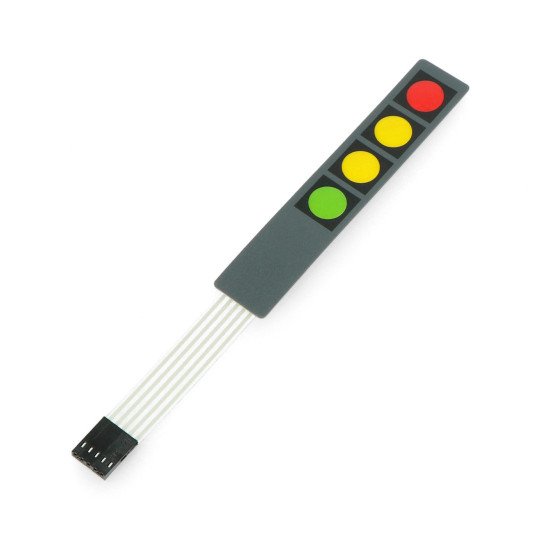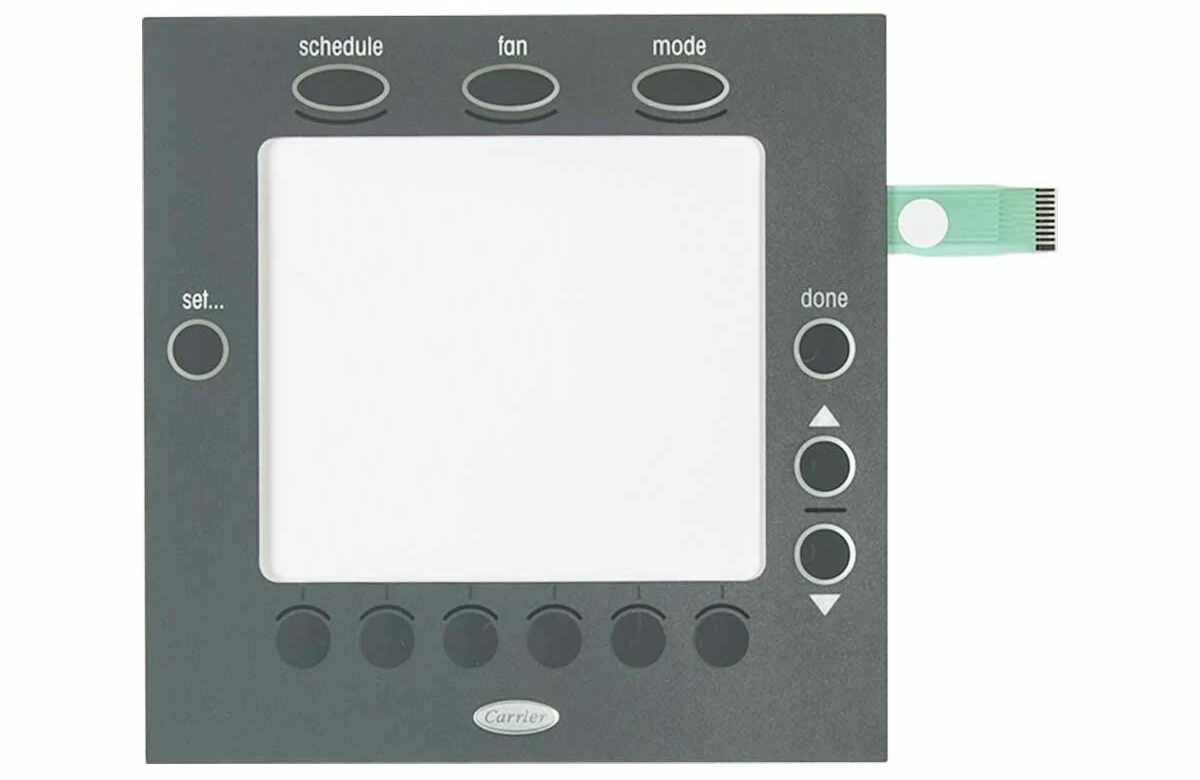Cutting-Edge Technology from a Expert Membrane Switch Manufacturer
Cutting-Edge Technology from a Expert Membrane Switch Manufacturer
Blog Article
Comprehending the Value of Membrane Switch in Modern Electronic Devices and Their Applications
Membrane switches serve as a crucial element in modern-day electronics, providing a reliable interface for customer interaction. Their customizable and light-weight nature makes them suitable for an array of applications throughout varied markets. Recognizing their vital elements and benefits can provide understandings into their expanding significance. As innovation remains to advance, the evolution of Membrane switches over questions regarding their future applications and layout developments. What lies in advance in this dynamic area?

What Are Membrane Switches?
Membrane buttons are essential elements in modern electronic devices, functioning as interface that help with communication between individuals and tools. These buttons contain numerous layers, consisting of a visuals overlay, a sticky layer, and a circuit layer, all of which interact to create a practical and long lasting interface. The layout enables a level, low-profile option that can be customized concerning dimension, shape, and visual appearance, making them ideal for different applications, from consumer electronic devices to medical devices. The tactile responses supplied by Membrane switches boosts individual experience, while their resistance to dust and moisture makes them ideal for challenging atmospheres. Membrane buttons can integrate functions such as backlighting and printed graphics, additionally expanding their functionality. Their adaptability and robustness make them a recommended option in sectors where reliability and ease of usage are vital, inevitably contributing to the seamless operation of modern-day electronic devices.
Trick Parts of Membrane Changes
While numerous components contribute to the performance of a membrane layer switch, 3 primary layers play significant roles in its style and operation. The top layer, commonly made from a long lasting polymer, acts as the user interface for individual interaction, typically including published graphics and symbols. Under this is the spacer layer, which maintains the needed distance between the leading layer and the circuit layer. This spacer layer warranties that the button triggers only when pressed, preventing unexpected inputs. Lastly, the circuit layer contains conductive traces that finish the electrical circuit when the top layer is dispirited. These traces can be made from numerous products, consisting of copper or silver. With each other, these components produce a robust and reputable gadget that is small and versatile, suitable for a large range of digital applications, from family devices to clinical tools. Recognizing these crucial elements is vital for valuing the overall functionality of Membrane buttons.
Benefits of Making Use Of Membrane Switches Over

Membrane Switch Manufacturing Process
Recognizing the Membrane button production procedure reveals the intricate actions associated with generating these vital parts. The process normally starts with the style phase, where specifications and formats are created using specialized software program. Following this, the graphic overlay is printed on an adaptable substrate, typically using high-resolution printing strategies to assure clearness and precision.Next, the sticky layers are used, which serve to bond the numerous elements together. The circuit layers, made from conductive inks or products, are then printed onto a different substratum. These layers are carefully straightened and laminated to develop a functional switch.After assembly, the buttons undergo checking to validate functionality and durability. Quality control procedures are carried out throughout the process to recognize and correct any type of flaws. Ultimately, the finished Membrane switches are packaged and planned for distribution, prepared to satisfy the demands of modern-day digital applications.
Applications of Membrane Switches Over in Different Industries
Membrane buttons are significantly utilized across numerous markets, particularly in clinical equipment and consumer electronic devices. In the medical field, they supply trustworthy control user interfaces for tools that need accurate operation. In customer electronic devices, these switches enhance customer communication by providing smooth and responsive user interfaces. Receptive Medical Devices Control
Many modern clinical devices use Membrane buttons for streamlined operation and improved customer interaction. These switches supply a trusted, sturdy interface for a range of applications, consisting of diagnostic devices, client monitoring systems, and medical tools. Their personalized layouts enable specific layouts that can suit the distinct needs of health care experts, making certain instinctive navigation and effective access to essential functions. Furthermore, Membrane buttons are resistant to contaminants, making them ideal for sterilized environments. The responsive feedback they supply can improve user confidence, reducing the threat of errors during important medical treatments. Generally, the integration of Membrane switches in clinical devices significantly adds to improved functional efficiency and client safety and security in medical care setups.
Customer Electronic Devices Interfaces
In the domain name of consumer electronic devices, Membrane buttons play a vital role in enhancing user interfaces across a wide variety of devices. These switches are essential to items such as push-button controls, microwaves, and video gaming consoles, providing a efficient and straightforward interface. Their style enables a seamless combination of graphics and capability, making it possible for producers to produce smooth, modern looks without endangering functionality. Membrane buttons are also known for their resilience, frequently standing up to substantial use and direct exposure to various environmental problems. In addition, they can incorporate functions like backlighting and tactile responses, additional boosting the user experience. As customer demands for innovative yet instinctive interfaces grow, Membrane switches proceed to be a vital element beforehand electronic gadget performance.
Layout Factors To Consider for Membrane Switches Over
Designing effective Membrane switches over needs careful interest to different aspects that try this site influence both performance and individual experience. One essential consideration is the option of materials, as they can affect longevity, tactile comments, and aesthetic appeal. Selecting an appropriate adhesive is essential for ensuring long-lasting attachment and resistance to ecological factors.In enhancement, the design and style of the switch must suit user interaction, with button dimensions and spacing maximized for simplicity of usage. The incorporation of graphics and labeling must focus on clearness and presence under numerous lighting conditions.Consideration of electrical characteristics, such as actuation pressure and switch level of sensitivity, will certainly improve the responsiveness of the Membrane button. The style ought to fit manufacturing procedures to guarantee cost-effectiveness and prompt production. Generally, a well-thought-out design improves both the functionality and the customer experience of Membrane buttons in modern-day electronics.

Future Fads in Membrane Switch Innovation
As technology proceeds to advance, Membrane buttons are positioned to incorporate new improvements that will certainly enhance their performance and application in various fields. One considerable fad is the consolidation of adaptable and long lasting products, which will boost the life expectancy and dependability of these switches. Boosted surface appearances and customizable graphics are additionally prepared for, enabling more instinctive individual interfaces.Moreover, the assimilation of smart innovation, such as touch-sensitive surface areas and haptic comments, is expected to improve individual communication, making Membrane changes a lot more interesting and responsive. Furthermore, advances in published electronic devices will allow much more complicated wiring within thinner accounts, even more broadening design possibilities.Sustainability will certainly additionally play a vital duty in future developments, as manufacturers discover environment-friendly materials and manufacturing processes. On the whole, these trends will certainly guarantee that Membrane switches over stay vital and relevant in an interconnected and significantly electronic world.
Regularly Asked Concerns
Just How Do Membrane Switches Compare to Standard Mechanical Switches?
Membrane switches offer benefits over traditional mechanical buttons, consisting of minimized size, lighter weight, and boosted resilience. They typically supply a sealed surface, boosting resistance to dirt and moisture, making them suitable for varied applications.
What Materials Are Frequently Utilized in Membrane Switch Building And Construction?

Can Membrane Changes Withstand Extreme Environmental Issues?
Membrane switches can endure severe environmental problems, relying on their layout and materials. High-grade constructions typically include resilience against temperature changes, moisture, and direct exposure to chemicals, making them ideal for various requiring applications throughout markets.
The Length Of Time Do Membrane Switches Usually Last Before Failing?
Membrane changes normally investigate this site display a life-span varying from 1 to 10 million actuations, depending upon aspects such as use regularity, environmental conditions, and manufacturing quality. Regular maintenance can prolong their toughness and operational integrity considerably.
Are Membrane Switches Customizable for Specific Applications?
Membrane switches are without a doubt personalized for specific applications. They can be customized in dimension, design, and performance, allowing suppliers to meet unique customer requirements and boost product looks while maintaining functional effectiveness and toughness. Membrane buttons are necessary parts in modern electronics, offering as individual interfaces that assist in communication in between tools and users. The tactile responses provided by Membrane changes improves user experience, while their resistance to dust and wetness makes them excellent for testing environments. The unification of graphics and labeling browse around this web-site must prioritize quality and presence under various lights conditions.Consideration of electrical features, such as actuation pressure and switch sensitivity, will certainly improve the responsiveness of the Membrane switch. Improved surface appearances and adjustable graphics are additionally anticipated, permitting for more intuitive customer interfaces.Moreover, the assimilation of clever modern technology, such as touch-sensitive surfaces and haptic comments, is anticipated to enhance user communication, making Membrane changes a lot more interesting and receptive. Membrane switches over offer benefits over typical mechanical buttons, including lowered size, lighter weight, and improved resilience.
Report this page